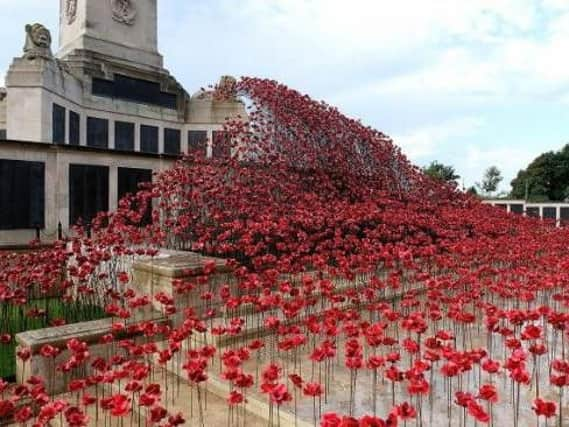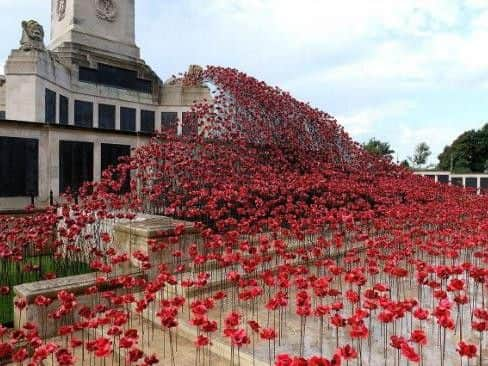WATCH: Sculpture formed from Tower of London poppies to go on show at Fort Nelson


Wave - a creation from more than 5,000 of the ceramic poppies by artist Paul Cummins and designer Tom Piper - will be at the Royal Armouries Museum in the fort on Portsdown Hill from April 13 to June 24 next year as one of the final destinations in a four-year tour.
Siona Mackelworth, interim public engagement director at the Royal Armouries said, ‘We are delighted that the Royal Armouries has been chosen to host the Wave during one of the last stages of its tour across the UK.
Advertisement
Hide AdAdvertisement
Hide Ad'The sculpture will rise from the impressive defensive ramparts of Fort Nelson with its stunning views across Hampshire and towards the Solent. The Fort will provide an inspiring location for visitors to reflect 100 years on from the final days of the First World War ’.


Wave and its sister sculpture Weeping Window are from the installation Blood Swept Lands and Seas of Red by Paul Cummins and Tom Piper that dominated the Tower of London from August to November 2014.
The tribute comprised 888,246 poppies - one for every British or colonial life lost at the Front during the First World War.
After the installation was dismantled, the two sculptures were created to be shown across Britain at in a range of places of particular First World War resonance.
Advertisement
Hide AdAdvertisement
Hide AdPortsmouth lost out in 2016 after hopes that Southsea Castle would be one of the Weeping Window display locations.


A Royal Armouries spokeswoman said: 'Fort Nelson is part of a large ring of forts built to defend the naval base of Portsmouth, and one of five forts built on Portsdown Hill in the 1860s. During the First World War it became home to some of Kitchener’s volunteer army.
'The use of artillery became a major part of the soldiers’ experience of the First World War, and Fort Nelson now hosts large artillery pieces from Royal Armouries’ national collection of arms and armour, including the British Army’s largest surviving First World War gun, the 18-inch, 180-tonne Railway Howitzer.
'The Royal Armouries is guardian of one of the finest national collections of arms and armour in the world with its origins based within the Tower of London.
Advertisement
Hide AdAdvertisement
Hide Ad'The Royal Armouries continues to have a presence in the White Tower at the Tower of London, at the National Museum of Arms and Armour in Leeds as well as at Fort Nelson.'
Together, the sculptures Wave and Weeping Window are made of over 11,000 poppies. At the end of the tour they will become part of the permanent collections at Imperial War Museums.
The national tour has been sponsored by the Department for Digital, Culture, Media and Sport , the Backstage Trust, Clore Duffield Foundation, the National Lottery and DAF Trucks.